Roguebook Preview
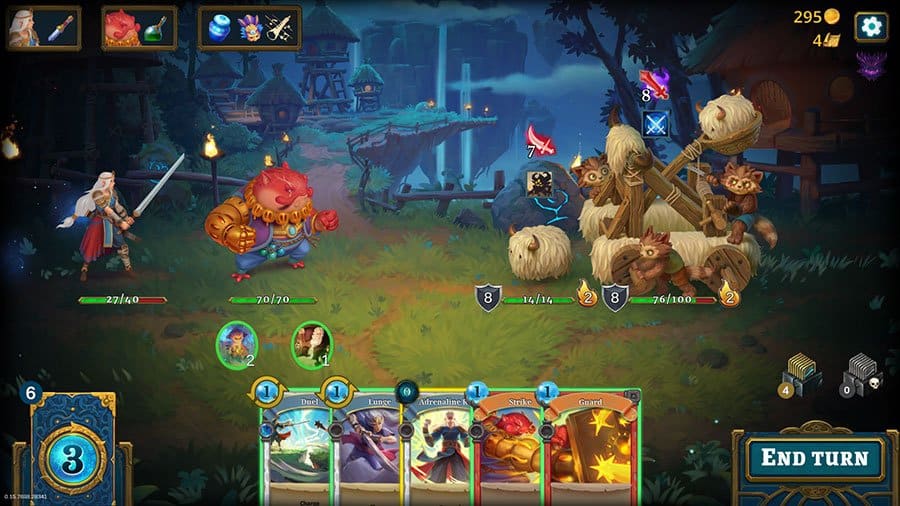
Abrakam Entertainment and Magic: The Gathering creator Richard Garfield come together to deliver an exciting roguelike deckbuilder that combines the tactically thrilling combat of titles like Slay The Spire (one of 2017’s best roguelike games) with a hex-based overworld and detailed card and character progression. Roguelikes have seen a huge surge in popularity in recent years, with the likes of Hades, Dead Cells, and Darkest Dungeon all bringing the genre to new heights. Does Roguebook add anything to this growing genre, or is it all things we’ve seen before?
Dive in; you won’t be disappointed.
Roguebook Preview – 2021’s Most Exciting Roguelike
[line style=’solid’ top=’10’ bottom=’10’ width=’100%’ height=’1′ color=’blue’]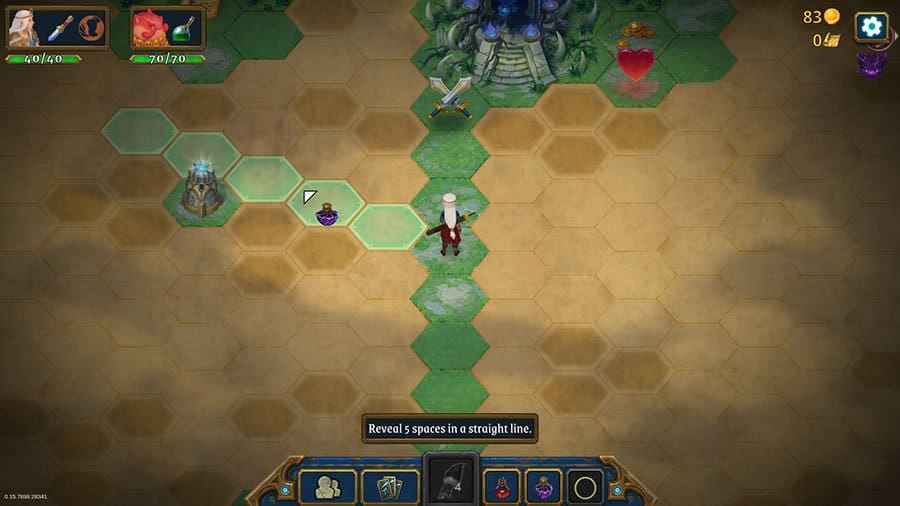
While the concept of a roguelike is one of simplicity – challenging players to overcome increasingly difficult challenges with the ultimate punishment of starting anew – the genre has grown over the years to offer deeper, more complex designs and ideas. While Roguebook is definitely a game you can pick up and play for a few hours, the level of depth and customization on display (even with the limited content in the version we played) is incredibly impressive.
There are two main fundamental aspects of the game: the overworld and the combat. While both areas are unique in execution, the overworld is probably one of its most refreshing aspects. Your character begins each run in a procedurally-generated landscape. Key components like boss fights and item locations remain similar, but much of the map changes on each additional playthrough. What truly makes this aspect of the game unique is that there’s a roguelike element to simply exploring.
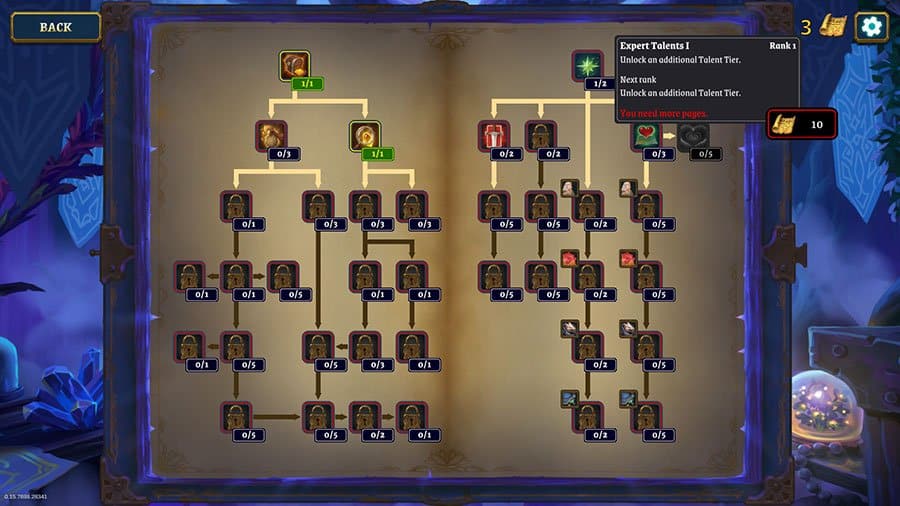
The map is not fully revealed; an almost fog-of-war like system is in place, restricting areas you can explore and see until you discover ink and paintbrushes. With these special items, you’re able to paint and reveal the routes ahead, creating paths to powerful items and alternative routes to bypass elite battle encounters. It’s a high risk, high reward system that encourages exploration and rewards careful planning with the allocation of valuable resources. On one attempt, you may uncover piles of gold, obtain plenty of powerful new cards, and even slay a fairy for some real riches. The next, you can find yourself struggling to make it past the first few battles.
Roguebook’s true standout elements of design come in the form of customizing your characters and cards. During each playthrough, you’re able to use two different characters. At this point, it is limited to the main character Sharra and the support character Sorocco; other characters will be available at release. Sharra primarily focuses on dealing damages to enemies, and also boasts a few agility cards. On the other hand, Sorocco serves as more of the meat of the operation, soaking up damage with high value block cards.
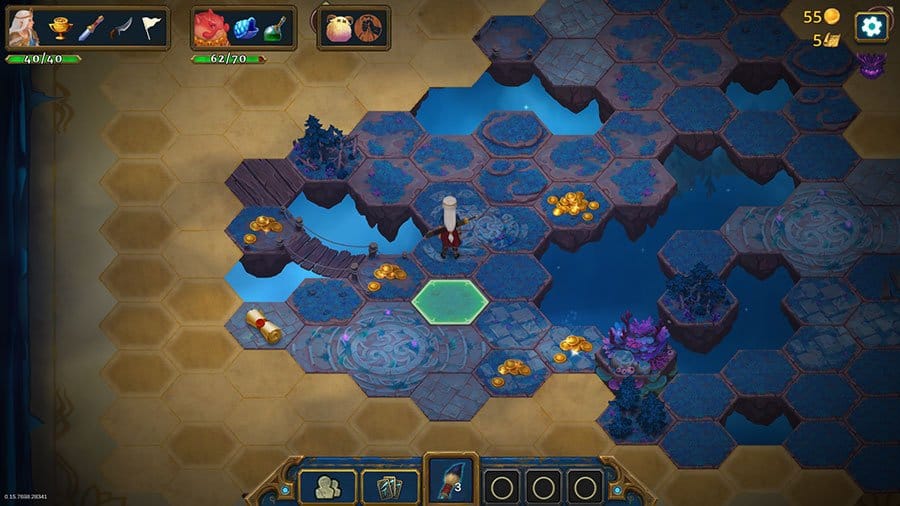
The combat system in Roguebook is clearly inspired by Slay the Spire, one of the best card-based roguelikes around. Its user interface, the summary windows providing information on buffs and debuffs, the way cards are played – if you’re familiar with Slay the Spire, you will immediately feel right at home. However, although the inspiration is proudly displayed for all to see, it’s not without interesting ideas of its own.
Both your party and the enemies you encounter have formations, much like Darkest Dungeon and similar games. Certain attacks will only hit the front line, while others reward you with bonuses depending on your positioning. Carefully choosing your cards, when to attack, when to defend, who to position to face the brunt of the bosses next strike – it’s tactically fantastic and really rewarding to play.
With each playthrough, your characters earn experience points by finding fragments of parchments scattered throughout its world. These experience points are carried between attempts, creating a constantly evolving progression system that is the very embodiment of the roguelike genre. However, the real beauty of the customization comes in a form that can be lost, amassing huge power with customized cards that can just as quickly disappear if you head into a battle unprepared.
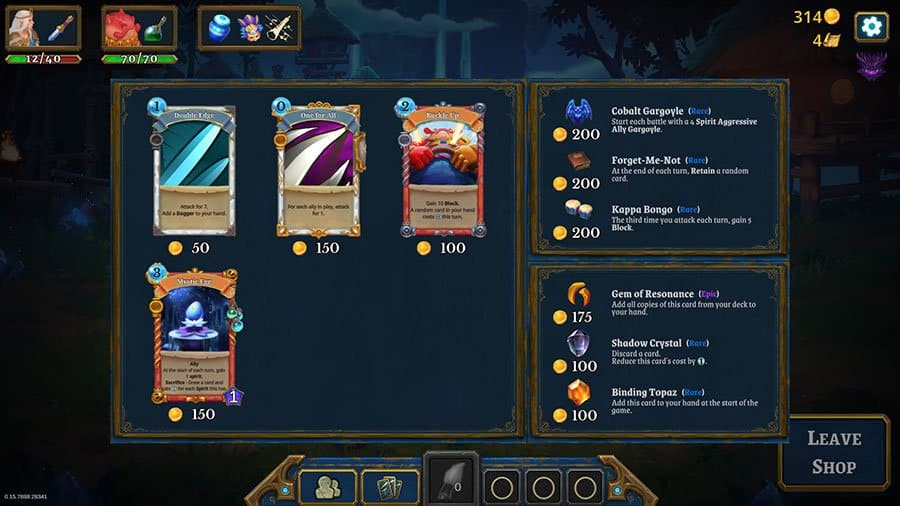
Cards are the backbone of the combat. They represent every move you can play and every ability you can activate, but they come in many varieties. These vary from simple attacking and blocking cards to summoning additional allies and raining down area of effect damage. All of the cards are valuable and substantial in their own right, but it’s the customization that promises near endless variety and replay value.
Gems can be found, purchased, and discovered in its world. They can increase damage, add additional effects, and even make a card appear at certain times – there’s a ton of choice on show. Each card has at least a single Socket – a buff slot that houses gems to increase a card’s effects – but as you progress, additional sockets can become available. I purchased a card that gave my team an additional mana at no cost if used by the character at the rear of my formation. I later buffed that card with gems to ensure it was always in my hand at the start of each fight, and even summoned another ally at my side. It’s very early days for Roguebook, but from what we’ve seen so far, it’s very exciting.
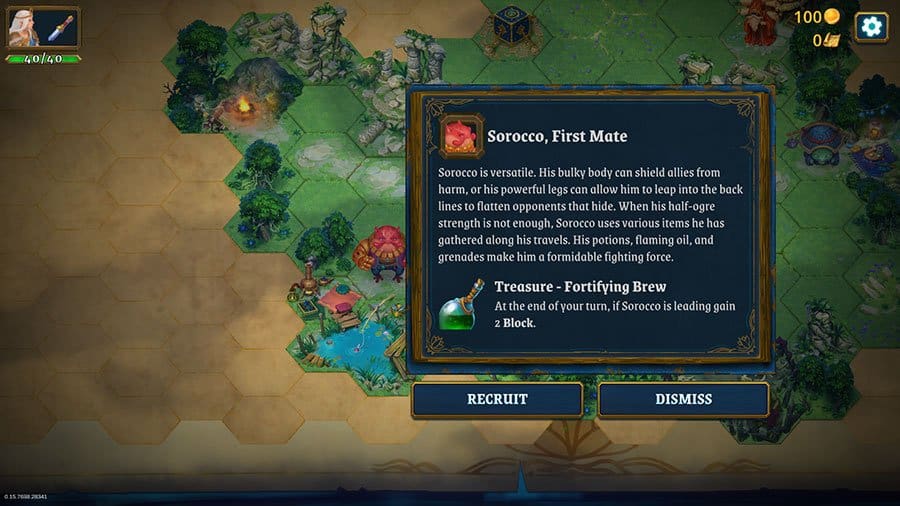
Roguebook takes clear inspiration from the roguelike genre’s greatest achievements in recent years, and why not? With an intriguing premise, an engaging overworld, and a combat system that had me addicted from the minute I began, I can’t wait to see what’s in store.
[blogger ids=” cat=’game-previews’ orderby=’date’ order=’desc’ count=’4′ descr=’200′ readmore=’1′ rating=’1′ style=’image_large’ border=’0′ dir=’vertical’]